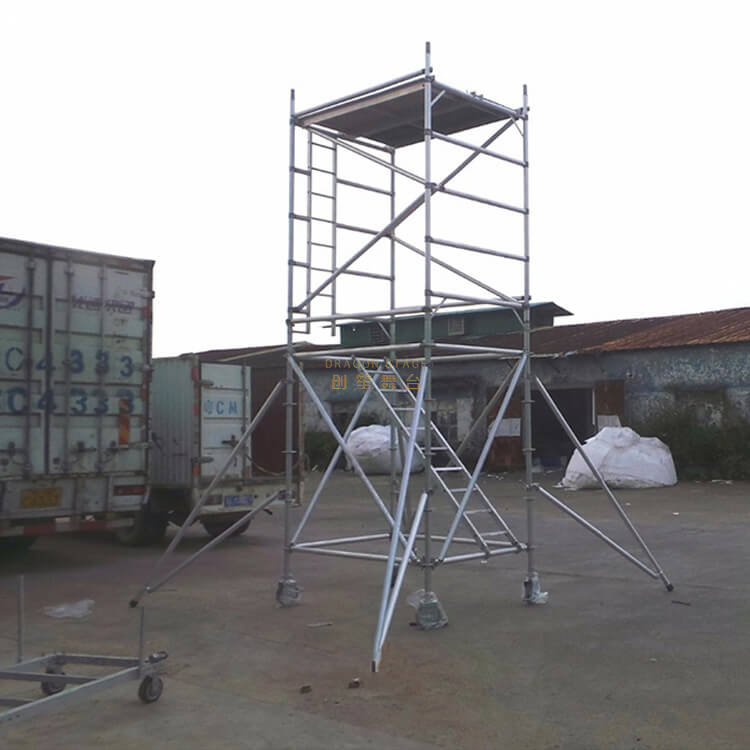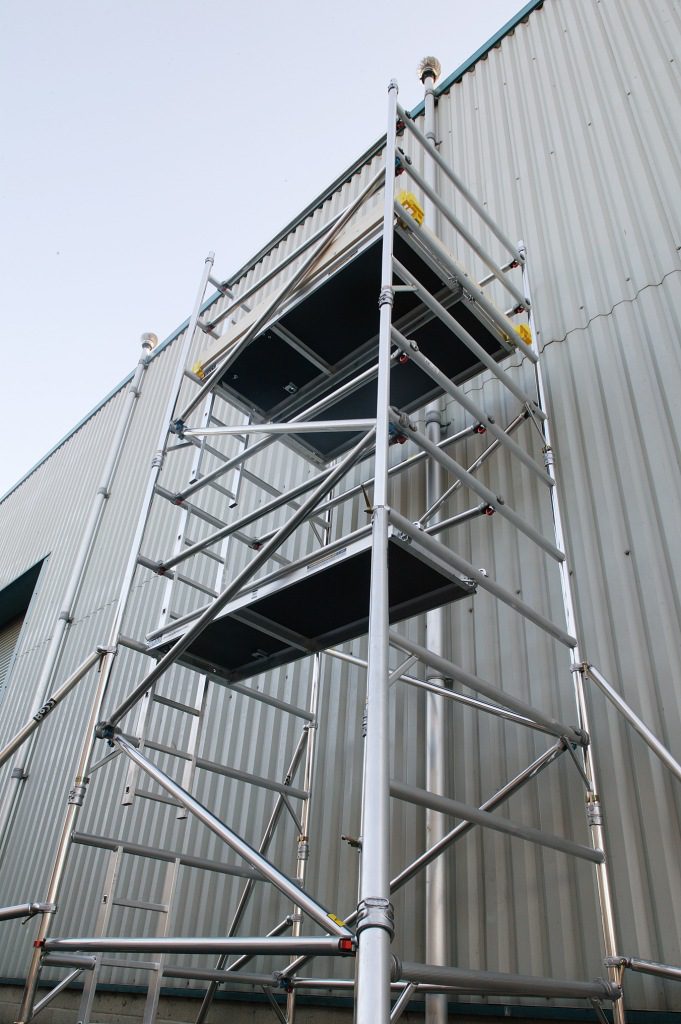Smokeshaft Scaffolding: Special Factors To Consider for a Special Job
Proper planning for smokeshaft scaffolding is essential for safety and security. Conduct risk analyses, review smokeshaft height and weather condition, and guarantee a stable foundation. Consider chimney material, age, and architectural requirements before scaffolding. Stick to safety measures and regulations, train employees, and examine scaffolding routinely. Choose sturdy, stable products with proper weight capacity and security attributes. Weather conditions like wind and rain can impact stability; anchor scaffolding and use weather-resistant materials. These are important considerations for an effective chimney scaffolding task.
Significance of Appropriate Planning
Reliable chimney scaffolding requires thorough planning to assure safety and security and structural stability throughout the building procedure. Prior to erecting scaffolding, a thorough threat evaluation need to be performed to recognize prospective threats and reduce threats. This consists of assessing elements such as smokeshaft height, closeness to high-voltage line, and climate condition. Correct website preparation is necessary to guarantee a stable structure for the scaffolding structure, which might involve leveling the ground, getting rid of particles, and establishing clear accessibility courses.
Tools maintenance is one more vital aspect of preparing for smokeshaft scaffolding. Regular inspections and upkeep of scaffolding components, such as structures, platforms, and guardrails, are essential to avoid devices failing during building and construction. Additionally, team communication plays an important role in ensuring that all employees comprehend their functions and duties on the scaffolding. Clear interaction aids in collaborating activities, enhancing safety techniques, and advertising a cohesive working environment.
Understanding Smokeshaft Structural Needs
A thorough understanding of chimney structural needs is necessary for guaranteeing the security and stability of scaffolding setups. Chimney security is a crucial variable that needs to be very carefully assessed before putting up scaffolding. Understanding the architectural lots that the smokeshaft can birth is essential to prevent any kind of possible threats or accidents. Variables such as the product of the chimney, its age, and any type of existing damages or wear and tear need to be thought about when assessing its structural demands.
When considering smokeshaft security, it is extremely important to assess the overall problem of the smokeshaft, including its structure and architectural supports. Any type of indicators of weakness or instability should be addressed prior to waging the scaffolding installment. Furthermore, assessing the architectural lots that the smokeshaft can hold up against is important to make sure that the scaffolding does not surpass these restrictions, which can jeopardize the smokeshaft's stability.
Precaution and Rules
To assure the risk-free installation and procedure of chimney scaffolding, adherence to certain precaution and guidelines is essential. Regulatory compliance plays a critical role in seeing to it that the scaffolding structure meets the necessary requirements for stability and load-bearing capacity.
Prior to erecting smokeshaft scaffolding, a detailed danger assessment must be conducted to determine prospective risks and apply suitable control procedures. This analysis ought to think about variables such as the condition of the chimney, weather, and the proximity of high-voltage line. scaffold dismantling
Workers associated with the scaffolding process should be appropriately learnt security procedures and making use of personal protective equipment. Regular inspections ought to be performed to keep an eye on the scaffolding's integrity and resolve any type of problems immediately.
In addition, interaction amongst staff member is crucial to make certain everybody is aware of safety protocols and can react successfully in situation of emergencies. By focusing on safety measures and regulative demands, the chimney scaffolding procedure can continue smoothly and safely.
Selecting the Right Scaffolding Products
Choosing proper scaffolding products is an essential step in guaranteeing the security and safety of chimney building and construction projects. When choosing scaffolding products for chimney building, numerous essential factors must be thought about to protect the success of the project.
- Material toughness: Select materials that can hold up against the severe problems of chimney building, such as corrosion-resistant steel or aluminum.
- Weight capability: Make certain that the scaffolding products chosen have the necessary weight capacity to support the employees, tools, and products required for the work.
- Stability: Pick scaffolding materials that give a secure platform for workers to perform their jobs safely and effectively.
- Adjustability: Choose products that are conveniently adjustable to suit the one-of-a-kind shape and size of chimneys, enabling accurate positioning at numerous elevations.
- Safety and security functions: Search for scaffolding products that come equipped with safety functions such as guardrails, toe boards, and non-slip surface areas to prevent accidents on duty site.

Climate Condition and External Aspects
Taking weather conditions and outside factors right into account is crucial when erecting smokeshaft scaffolding. Wind and rainfall can dramatically influence the stability of the framework, requiring suitable security preventative measures to be in position.
Recognizing these elements is vital to assure the safety and security of workers and the success of the job.
Wind and Rainfall Effects
Often, adverse climate condition such as wind and rainfall can greatly influence the stability and safety of chimney scaffolding frameworks. To mitigate these threats, it is necessary to take into account the following variables:
- Wind security: Guaranteeing that the scaffolding is firmly secured and braced to withstand strong winds.
- Rain defense: Applying procedures to secure the scaffolding and employees from rain, stopping unsafe surfaces and potential threats.
- Weatherproofing: Utilizing weather-resistant products and finishes to guard the scaffolding from rust and weakening because of prolonged direct exposure to the components.
- Precaution: Applying rigorous methods for stormy climate condition, such as stopping job during severe weather events to ensure employee safety.
- Normal examinations: Performing regular checks to evaluate the scaffolding's problem and make any kind of required repair work or modifications to keep security and safety.
Safety And Security Safety Measures in position
Unfavorable weather conditions and external factors demand rigorous safety and security preventative measures to be established to ensure the stability and stability of chimney scaffolding frameworks. When working in such problems, fall defense comes to be vital. Workers have to be furnished with harnesses, guardrails, and individual safety tools to prevent accidents and injuries.
Additionally, extensive tools training is important to make sure that employees comprehend just how to securely run equipment and devices also in tough climate. Regular safety and security assessments must be carried out to examine the scaffolding's condition and make any kind of essential adjustments quickly.
Evaluation and Upkeep Guidelines
Routine and complete evaluation and maintenance of smokeshaft scaffolding are crucial to assure architectural stability and secure working problems. To ensure the scaffolding continues to be safe and practical, it is necessary to comply with a stringent examination frequency and upkeep routine. Here are some important standards to take into consideration:
- Examine scaffolding before each use: Look for any type of indications of damages, instability, or deterioration.
- Schedule regular specialist assessments: Have actually a qualified individual conduct thorough assessments a minimum of once a month.
- Address upkeep problems quickly: Any type of recognized problems ought to be repaired right away to prevent crashes.
- Follow manufacturer's standards: Abide by the suggested upkeep procedures offered by the scaffolding manufacturer.
- Maintain detailed records: Keep a log of all evaluations, upkeep activities, and repairs for future reference and conformity functions.
Regularly Asked Questions
Can Smokeshaft Scaffolding Be Used for Normal Structure Upkeep Tasks as Well, or Is It Especially Created for Smokeshaft Job?
Chimney scaffolding can be repurposed for routine building upkeep jobs due to its flexibility. However, adherence to safety guidelines is necessary. Proper training ensures the scaffold's safe and effective use for numerous applications beyond chimney job.
What Details Certifications or Qualifications Should Scaffolding Workers Have When Servicing Chimney Projects?
When servicing chimney jobs, scaffolding workers must possess safety and security training and experience to ensure a secure work environment. Furthermore, qualifications should include proficiency in tools upkeep and inspection to promote safety and security requirements.
Exist Any Type Of Constraints or Unique Factors To Consider for Using Smokeshaft Scaffolding in Historic or Older Buildings?
When thinking about smokeshaft scaffolding for historic or older structures, it's necessary to prioritize historic conservation by making sure the structure's integrity is preserved. Special considerations may include adherence to preservation guidelines, minimizing effect, and using specialized equipment to shield the building's historical value.
How Does the Presence of Birds or Other Wildlife Nesting in the Smokeshaft Influence the Scaffolding Arrangement and Upkeep Process?
The presence of birds or wild animals nesting in a smokeshaft can substantially affect safety and security during scaffolding configuration and maintenance. Effective wildlife administration actions must be implemented to ensure worker security and stop disturbances to the task available.
Are There Any Type Of Certain Insurance Coverage Requirements or Responsibility Factors To Consider When Using Smokeshaft Scaffolding on Residential or Commercial Properties?
When making use of smokeshaft scaffolding on domestic or business properties, it is vital to accomplish details insurance policy demands to safeguard versus potential risks. Liability considerations must additionally be meticulously assessed to ensure correct protection for any type of unforeseen cases.

Final thought
To sum up, chimney scaffolding demands thorough planning, understanding of architectural necessities, conformity with precaution and laws, option of suitable products, consideration of weather, and constant evaluation and upkeep.
By adhering to these standards, professionals can assure the safety and performance of their scaffolding setup for chimney-related tasks.
